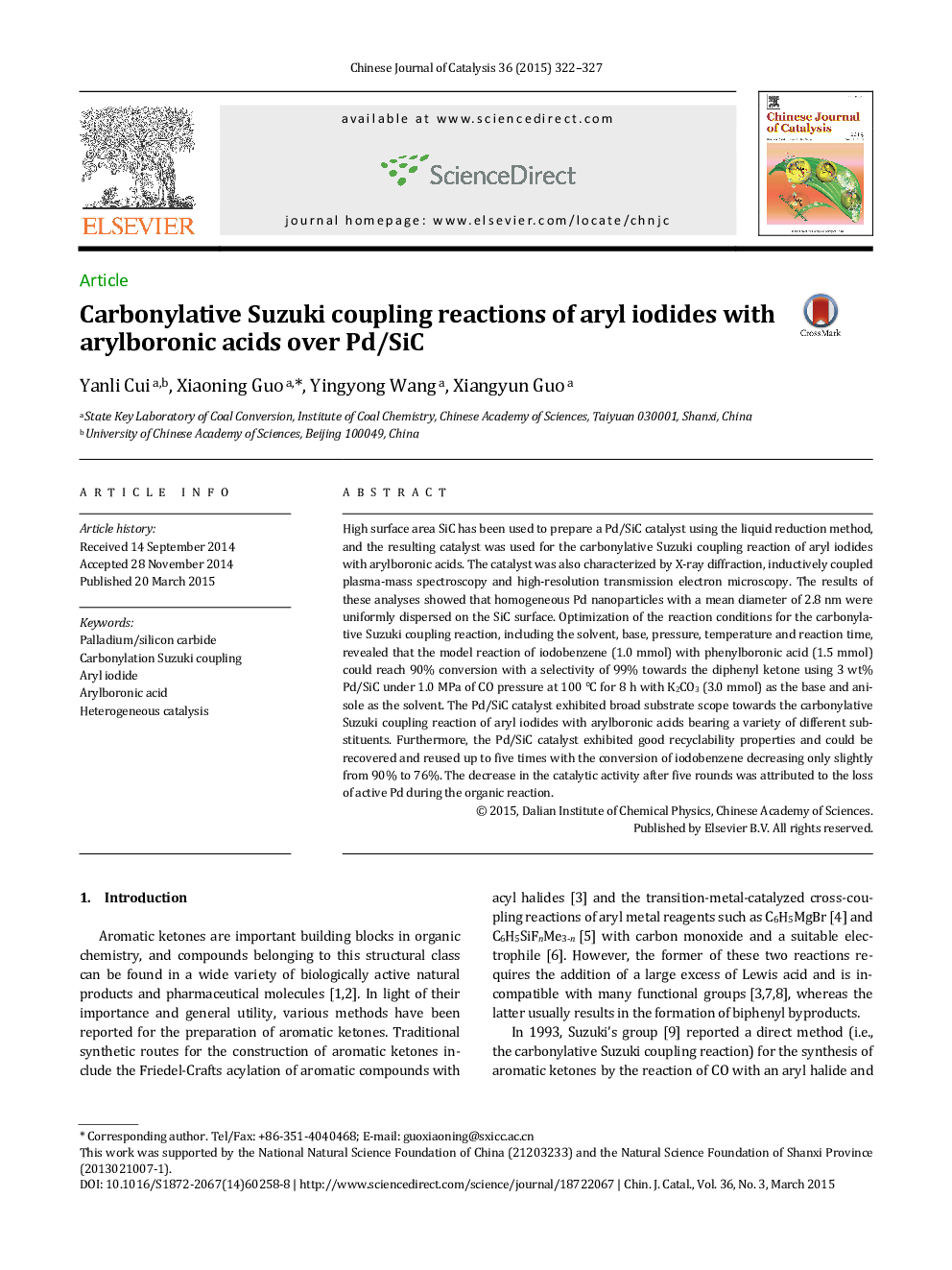| Article ID | Journal | Published Year | Pages | File Type |
|---|---|---|---|---|
| 59935 | Chinese Journal of Catalysis | 2015 | 6 Pages |
High surface area SiC has been used to prepare a Pd/SiC catalyst using the liquid reduction method, and the resulting catalyst was used for the carbonylative Suzuki coupling reaction of aryl iodides with arylboronic acids. The catalyst was also characterized by X-ray diffraction, inductively coupled plasma-mass spectroscopy and high-resolution transmission electron microscopy. The results of these analyses showed that homogeneous Pd nanoparticles with a mean diameter of 2.8 nm were uniformly dispersed on the SiC surface. Optimization of the reaction conditions for the carbonylative Suzuki coupling reaction, including the solvent, base, pressure, temperature and reaction time, revealed that the model reaction of iodobenzene (1.0 mmol) with phenylboronic acid (1.5 mmol) could reach 90% conversion with a selectivity of 99% towards the diphenyl ketone using 3 wt% Pd/SiC under 1.0 MPa of CO pressure at 100 °C for 8 h with K2CO3 (3.0 mmol) as the base and anisole as the solvent. The Pd/SiC catalyst exhibited broad substrate scope towards the carbonylative Suzuki coupling reaction of aryl iodides with arylboronic acids bearing a variety of different substituents. Furthermore, the Pd/SiC catalyst exhibited good recyclability properties and could be recovered and reused up to five times with the conversion of iodobenzene decreasing only slightly from 90% to 76%. The decrease in the catalytic activity after five rounds was attributed to the loss of active Pd during the organic reaction.
Graphical AbstractPd/SiC as a heterogeneous catalyst exhibits both excellent activity and stability for the carbonylative Suzuki coupling reaction of various aryl iodides with arylboronic acids bearing different substituents.Figure optionsDownload full-size imageDownload as PowerPoint slide
